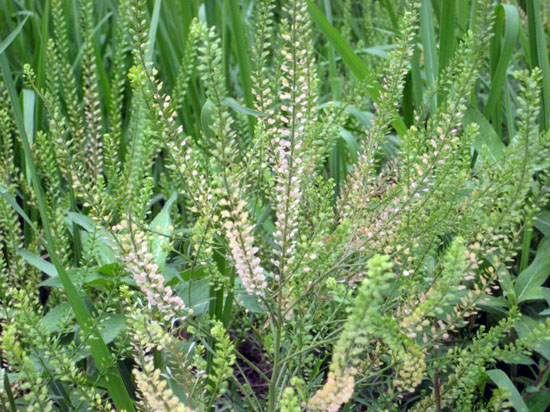Distribution:
Eastern and south central China (Descurainia), northern and northeastern China (Lepidium)
Properties (characteristics):
Acrid, bitter, cold
Channels (meridians) entered:
Lung, heart, liver, stomach, bladder
Actions & Indications:
In whooping cough, pleurisy, idiopathic pneumothorax, pulmonary edema, ascites, Chronic Nephritis, and pyloric infarction.
Chemical ingredients:
(1) Heart stimulating chemicals : stophanthidine, evomonoside, helvticoside, evbioside, erysimoside
(2) glucosinolates, benzyl isothiocyanate, allyl isothiocynatge, allyl isothiocyanate, 3-butenyl isothiocyanate
(3) fatty acids: linolenic acid 7.54%, linoleic acid 32.5%, oleic acid 25.1%, sinapic acid 21.4%, palmitic acid 9.64%, stearic acid 3.81%
(4) seeds of du xing cai (lepidium apetalum Willd.) contain sinalbin, protein and sugar

Dosage:
To take orally 3 -9 g (wrap for making decoction) or make into pills or powder form.
For external use: appropriate amount. Wash with decoction or make into paste and apply.
For edema, use the raw herb. For asthmatic cough with abundant of phlegm, use the stir fried herb. For asthmatic cough due to lung deficient, use the honey baked herb.
Cautions:
Side effects of large dosage can cause tightness in chest, nausea, vomiting, dizziness, panic, rash, pale complexion, sweating, breathing difficulty, increased heart rate, lowering of blood pressure and heart failure.
Not to use in cases of wheezing and cough due to lung qi deficient, or in edema due to pixu (spleen deficient)

![Diseases, Symptoms, tcm, [tcmwindow.com]](/uploadFile/adImg/2015/11/11/f5cbfcc0-4df5-4646-9b9a-f316651a0199.jpg)





